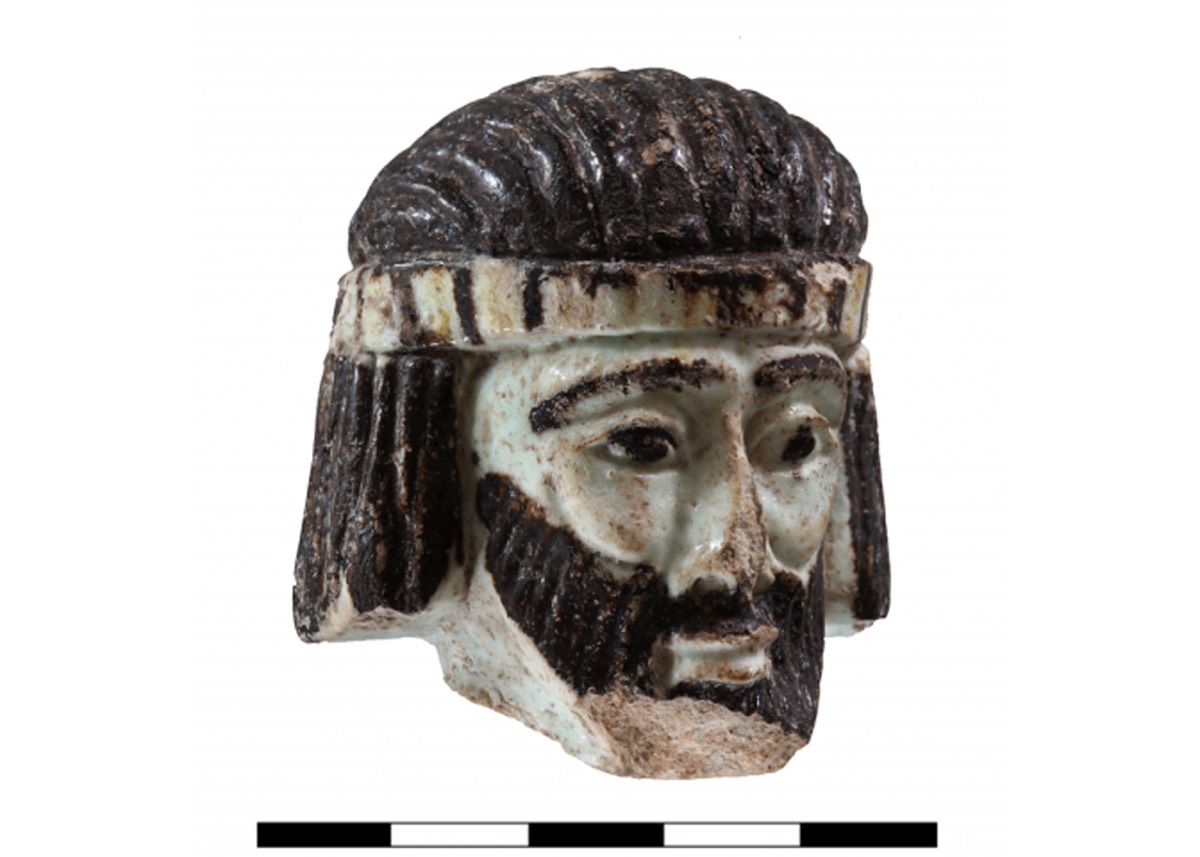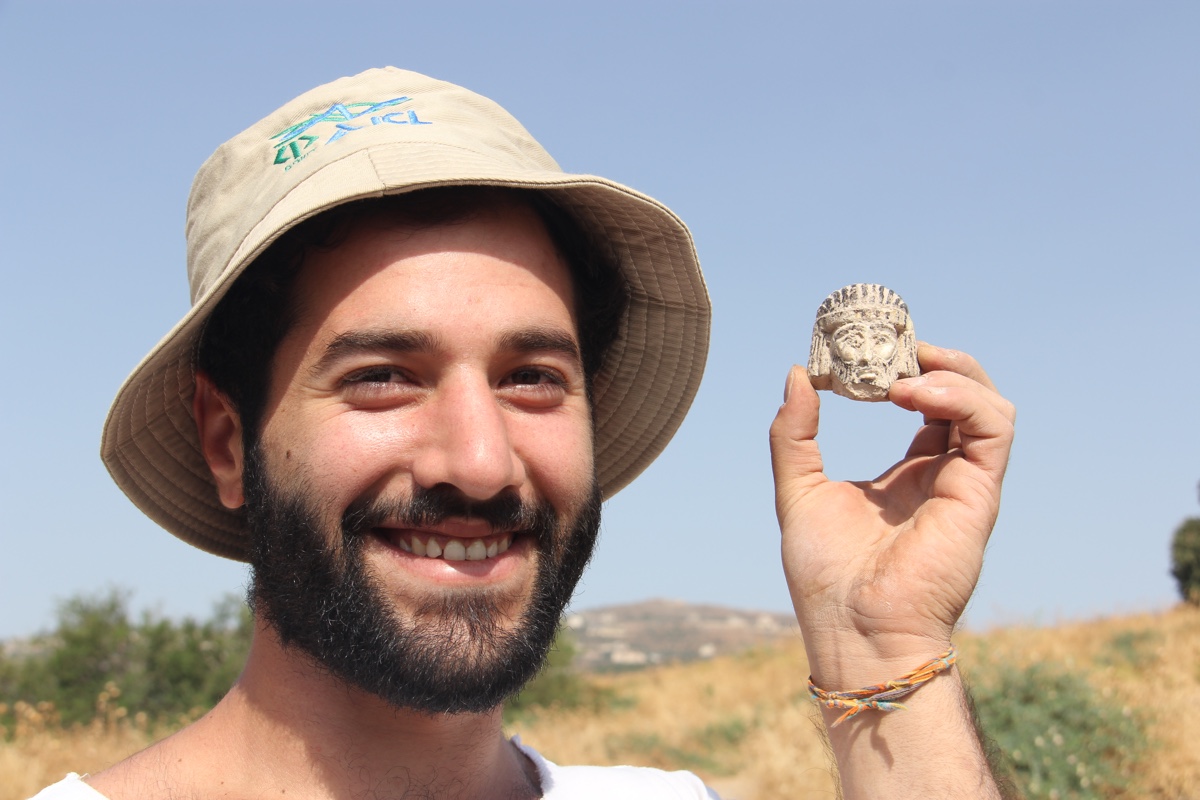A Face from the Bible May Appear in This Tiny Sculpture

A tiny but intricately carved sculpture of what may be the head of a biblical king, dating back over 2,800 years, has been discovered at the ancient city of Abel Beth Maacah in northern Israel.
Mario Tobia, an engineering student from Jerusalem, discovered the sculpture last summer in a large building at the highest point of the ancient city, which is mentioned several times in the Hebrew Bible. The sculpture depicts a man with long, black hair and a beard who is wearing a yellow and black headband. He has dark, almond-shaped eyes and a serious expression on his face.
Carved in a glazed ceramic called faience, the head is only about 2 by 2.2 inches (5.1 by 5.6 centimeters) in size and was once part of a small statuette, now lost, that was 8 to 10 inches (20 to 25 cm) in height, archaeologists said. [8 Alleged Relics of Jesus of Nazareth]
"Despite the head's small and innocuous appearance, it provides us with a unique opportunity to gaze into the eyes of a famous person from the past — a past enshrined in the Book of Ages [the Hebrew Bible]," Robert Mullins, a professor at Azusa Pacific University's Department of Biblical and Religious Studies who is co-director of excavations in the ancient city, said in a statement.

Who is it?
Whom does the miniature sculpture depict?
The quality of the carving and its seemingly careful placement inside a possible administrative building at the peak of the city indicate that it depicts an elite person, Mullins said. "We're guessing probably a king, but we have no way of proving that," said Mullins.
If this was a king, which one? Radiocarbon dating of organic material found in the same building as the miniature sculpture suggests that the object was constructed sometime from 902-806 B.C., Mullins said. At this time, he noted, the borders of three different kingdoms — Israel, Tyre and Aram-Damascus — were near Abel Beth Maacah. And these borders often changed, so different kingdoms controlled Abel Beth Maacah at different times. [The Holy Land: 7 Amazing Archaeological Finds]
Sign up for the Live Science daily newsletter now
Get the world’s most fascinating discoveries delivered straight to your inbox.
Given the long stretch of time during which the sculpture could have been created and the fact that control of Abel Beth Maacah changed throughout this period, the sculpture could depict numerous kings, Mullins said. Three possibilities are King Ahab of Israel, King Hazael of Aram-Damascus and King Ethbaal of Tyre, but there are many other candidates, he said.
Excavations in the large building will continue this summer, and archaeologists hope to find more information that may help determine whom this miniature sculpture depicts Mullins said.
Excavations at Abel Beth Maacah are carried out jointly between Azusa Pacific University and the Hebrew University of Jerusalem. The other two co-directors are Naama Yahalom-Mack and Nava Panitz-Cohen, who are both researchers at the Hebrew University of Jerusalem.
The miniature sculpture is on display at the Israel Museum in Jerusalem. Yahalom-Mack described the discovery recently at the 44th Annual Archaeological Congress at Ben-Gurion University of the Negev. The scientists will publish a paper on the discovery this month in the journal Near Eastern Archaeology.
Originally published on Live Science.

Owen Jarus is a regular contributor to Live Science who writes about archaeology and humans' past. He has also written for The Independent (UK), The Canadian Press (CP) and The Associated Press (AP), among others. Owen has a bachelor of arts degree from the University of Toronto and a journalism degree from Ryerson University.









